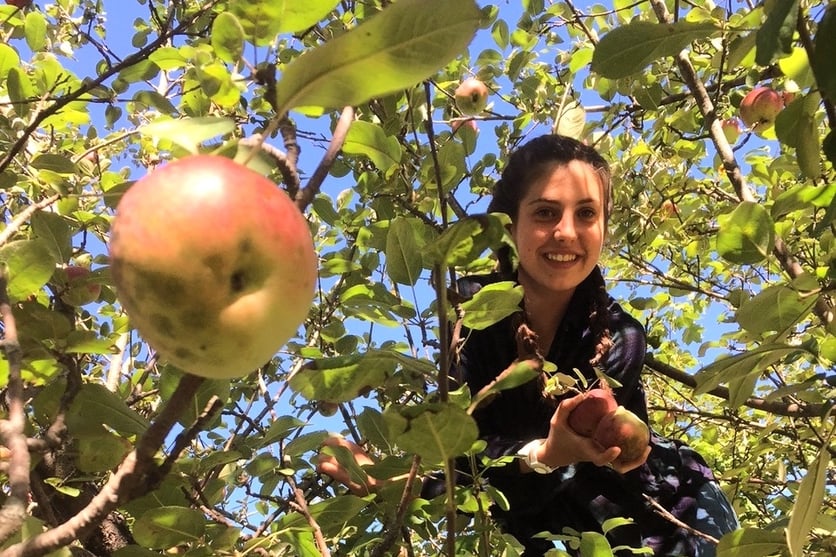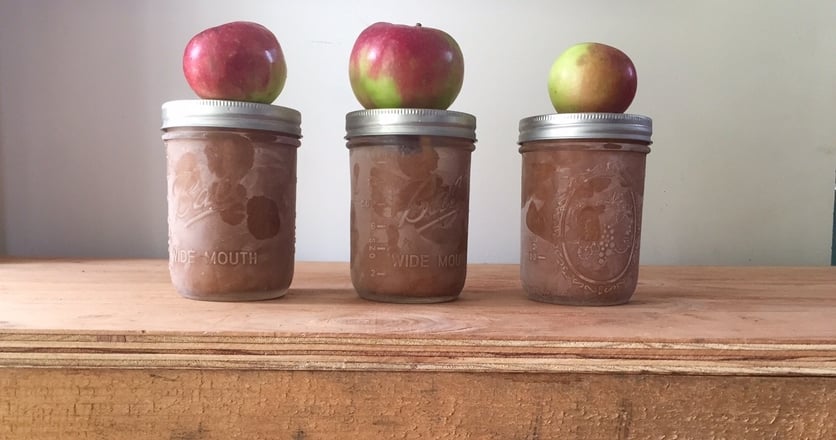As September inches into October, early fall resonates across campus in emphatic, brisky sneakers rushing to and from class, in NFL Sports Center highlights reverberating from the Wise, in the Dining Hall’s purple carrots and midnight kale, in Mike Koenig’s perennial SAT announcements.

At last the desultory anticipation of late summer meanders to its close. A sense of purpose and punctuality returns to the sidewalks. E-mail inboxes fill again. And, with orientation behind us and Fall Family Weekend now here, we inaugurate our collective routines.
Early Autumn in Andover, when the still-inky, pre-coffee day greets the windows-open living room in an icy embrace, blithely warms into an after-school-swim 80 degrees, then lingers, casually cooling and mosquito-less well into study hall as a fresh batch of new students tentatively adjust to the hurried pace of campus life; as returners confidently snake their way through the new class schedule; as a camera-laden drone distractingly murmurs atop the future dining commons’ freshly dug dirt pile. Early fall at Proctor, where the time-honored sometimes meshes, sometimes clashes with the new.
Over at Eco Dorm, students mark the changing of the seasons with applesauce. Heaping bushels-full into wagons, carts, and bags, they haul the Proctor Orchard-grown apples into my kitchen; chop, boil, and strain them until they have multiple sauce pans of piping hot applesauce (not to mention two dozen shortbread cookies).
Possibly New England’s most iconic dish—it’s difficult to make applesauce without regarding tradition’s tug. A lesson in simplicity, applesauce doesn’t require perfect looking apples and makes for a tasty dish of what others might throw away. Rewarding patience, applesauce acts as a teacher, while fostering those stove-warmed friendships formed in so many over-the-years kitchens.
Though repeatable, every batch of apples makes its own sauce—the illusion of constancy laid bare as September discards its summer-green garb to gather, momentarily, October’s ever-thinning, ever-falling harvest-hued skirts. The proclivity to compare, to yearn for the manufactured, the uniformed, the way it was in some simpler, earlier time branches in us early each fall as new students arrive, new buildings rise, new rules and schedule changes take effect. And in moments, we confidently advance with a careful eye to our past, satisfied in our achievements like mid-October before a coming storm, as our search for some school-wide Balanced Rock, Chimera-like, eludes us, as even granite, over time, erodes.

Where we look for balance, we find change both in nature and in institutions. Last week, we said prayers for the pair of century-old sugar maples slated to fall as construction of the new Dining Commons commences. Anchoring the west end of campus, these honorable, field-spreading benefactors have verified our days and corroborated our seasons—their roots sunk deep and their presence filtering the way sun filters through leaves, the way literature plants an insight—providing habitat and purifying our air.
Change is both disruptive and painful. To mourn for these trees is to acknowledge their impact—to be grateful—to be grateful for simple moments spent climbing their branches, the sound of squirrel chatter, the taste of maple sap, a quick flash of nuthatch feathers.
Yet, change occurs, erratic and disconcerting. Amid rich, complex ecosystems some flowers bloom, while others do not, and in moments we experience the unforeseen, the white space at the edge of maps of which Mike Henriques so often speaks, that eludes our grasp, that testifies to the irreproducibility of days, of earlier times, that one particular batch of applesauce.

And so we press on. We lay new foundations. We query new friends, new students: “Where are you from? What was your favorite swimming hole of the summer?” And we mourn for those lost trees, times, mentors, within whose welcoming we discovered our own inexplicable sense that this, this place, this is a community to which we too belong.
A school culture, like any culture, is but a nourishing habitat. Born from its verb form: to cultivate, culture is a blending of the latin culti (to live in) and arare (to plow or till). Culture—a term which today we are more likely to encounter suburbanized and politicized in phrases such as “workplace culture,” and “culture wars”—is a word deeply rooted in a land well-tended, whose inhabitants participate in the daily work of caring for soil, planting seeds, pruning, weeding, harvesting, and celebrating that which is grown. For culti also hints at the Latin colere—to honor, to cherish.
And it is in the honoring, the cherishing, the connection we experience within our communities that cultivates our sense of responsibility—not just to ourselves, but with the vast interconnecting webs which rise up in us as leaves trickle down each November, as chainsaws rev, as another milkweed pod opens, scattering 200 or so seeds under the same blood-red eclipse I reach for through a pair of binoculars, my seven-year old son by my side, both of us bearing witness to the coming winter, pressing a few leaves from the now-cut maples at our kitchen table, so that we may also welcome and abide in the opportunity change allows.
Yet to fall to fail to cut down is not to separate any more than climate change can be compartmentalized. When once-in-a-thousand-years’ rain falls while once-in-a-thousands-years’ drought persists, denial is the only available form of protest. To acknowledge this morning’s frost—alluvial and vein-fringed, coating another wagon-load of apples in the Carriage House side yard—is to be with what is, however gossamer-like and ephemeral. For history is always contemporary—the frost, though gone, still lingers in the now bitten apples, in the now-curling grape leaves, in the deaths of a thousand unseen flies. As the Zen master Dogen once wrote: “Each moment is all being, is the entire world. Reflect now whether any being or any world is left out of the present moment.”
The maple trees, in other words, are being and have been lost at the same time as what is bumps against language’s ability to express our interconnected experiencing of fall whose very nature we perceive as an amalgamation of iPhones, of B blocks, of doorframes and thin winding rivers across which beavers carefully place dogwood branches, cut side up-stream, as the first sensitive ferns curl in their cold-nipped fronds.

For change happens—not to us, but through us—as certainly as our cars burn carbon, as certainly as apples fall, as certainly as we will continue to cherish those departed best by taking great care of what we build and what we grow from the rich soil they have left behind. Done well, we will continue day-in and day-out to cultivate a culture worth cherishing—a gleam in the eye, a sense of satisfaction, a knowing whose presence is as tangible and impossible to pin down as thin seams of mist rising off five a.m. lawns, as simple and unrepeatable as each fresh batch of applesauce.







